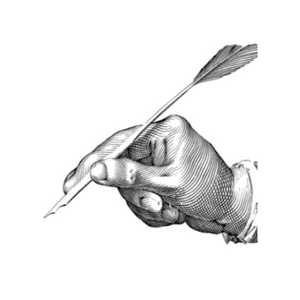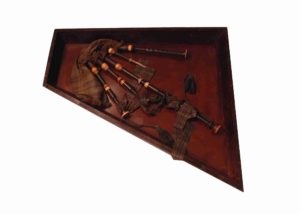Major-General David Stewart of Garth
Just before heading up the stairs to Gallery 4 visitors will see the painting of someone who, on first glance, might not look like a
Home » Blog » Soldier Stories » Major-General David Stewart of Garth

Just before heading up the stairs to Gallery 4 visitors will see the painting of someone who, on first glance, might not look like a soldier. This is Major-General David Stewart of Garth and despite the first impressions he has played a very important role in the history of the Regiment. He was born to a landowning family in Perthshire and, at the age of 15 his father purchased him a commission in the 42nd. He accompanied the Regiment on operations in the Caribbean and the invasion of Egypt in 1801. In 1812 he returned to Scotland and, three years later, was appointed Vice-President of the Highland Society of London. The Society’s aim was to preserve traditional Highland Culture; this was felt to have been endangered by the Proscription Act of 1746 which had placed a ban on carrying weapons and the wearing of the kilt or plaid.

One of Stewart’s key interests was Highland tartans. In the absence of concrete records, he proposed the idea that certain clans could be identified by particular patterns or setts. In 1815 the Highland Society wrote to all clan chieftains asking them to furnish details of their historic clan tartans. This act was an important part of the process in the invention of the ‘romantic’ idea of Highland tartans.
In 1817, Stewart was asked by the Commanding Officer of the 42nd to write the history of The Black Watch. Much of the unit’s historical records had been lost in 1794 when the Regiment had sailed to Flanders. In 1822 Stewart published a two-volume history ‘Sketches of the Character, Manners and Present State of the Highlanders of Scotland; with details of the Military Service of the Highland Regiment.’ The work sold well, though one critic noted that ‘he has no objection to blend truth and fiction together, and to avail himself of the taste of the day for raids and romances to please all descriptions of readers.’
Stewart was a contemporary of Sir Walter Scott and helped plan George IV’s 1822 visit to Edinburgh – the first by a reigning monarch to Scotland since 1633. Later he was made the Governor of St Lucia where he died of fever in 1829.
Helen Smailes, Senior Curator of British Art, National Galleries of Scotland noted in a report dated 2010 that this framed oil painting is by artist James M Scrymgeour and shows Garth standing in full military uniform leaning his weight on a sword. The Black Watch Museum is fortunate in owning one of only two recorded oil portraits of Stewart (the other being by Raeburn and currently unlocated, being illustrated in the Oxford Dictionary of National Biography courtesy of Sothebys) and the only one in a British public museum collection. This painting is very rare example of the portraiture of J M Scrymgeour, it was shown at the Royal Academy in 1832 and is of national (arguably UK as well as Scottish) importance.
Just before heading up the stairs to Gallery 4 visitors will see the painting of someone who, on first glance, might not look like a

Rosie Waine is the William Grant Foundation Research Fellow at the National Museum of Scotland. Here she writes how the Black Watch Museum & Castle
The Black Watch Museum archive holds a considerable quantity of primary source material relating to the Battle of Loos, 24th September 1915. This event has
Subscribe to Our Newsletter
© The Black Watch Castle and Museum
The Black Watch Regimental Trust is a charitable company registered in Scotland | Charity No: SC005848
